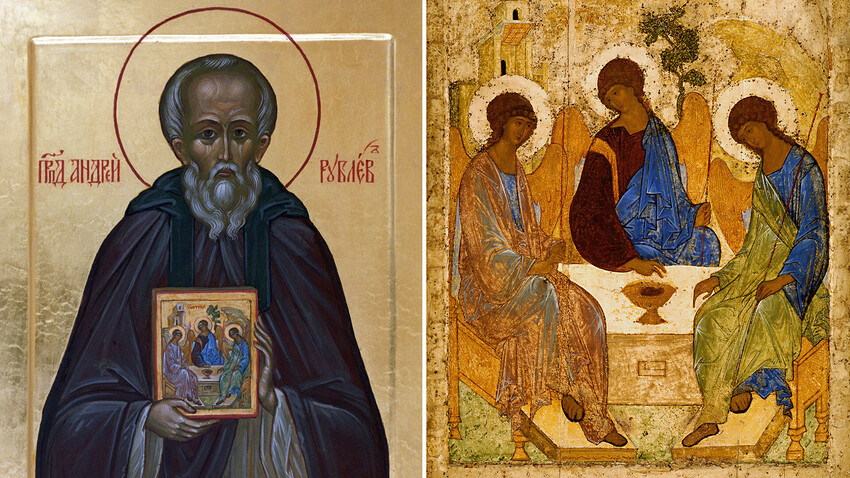
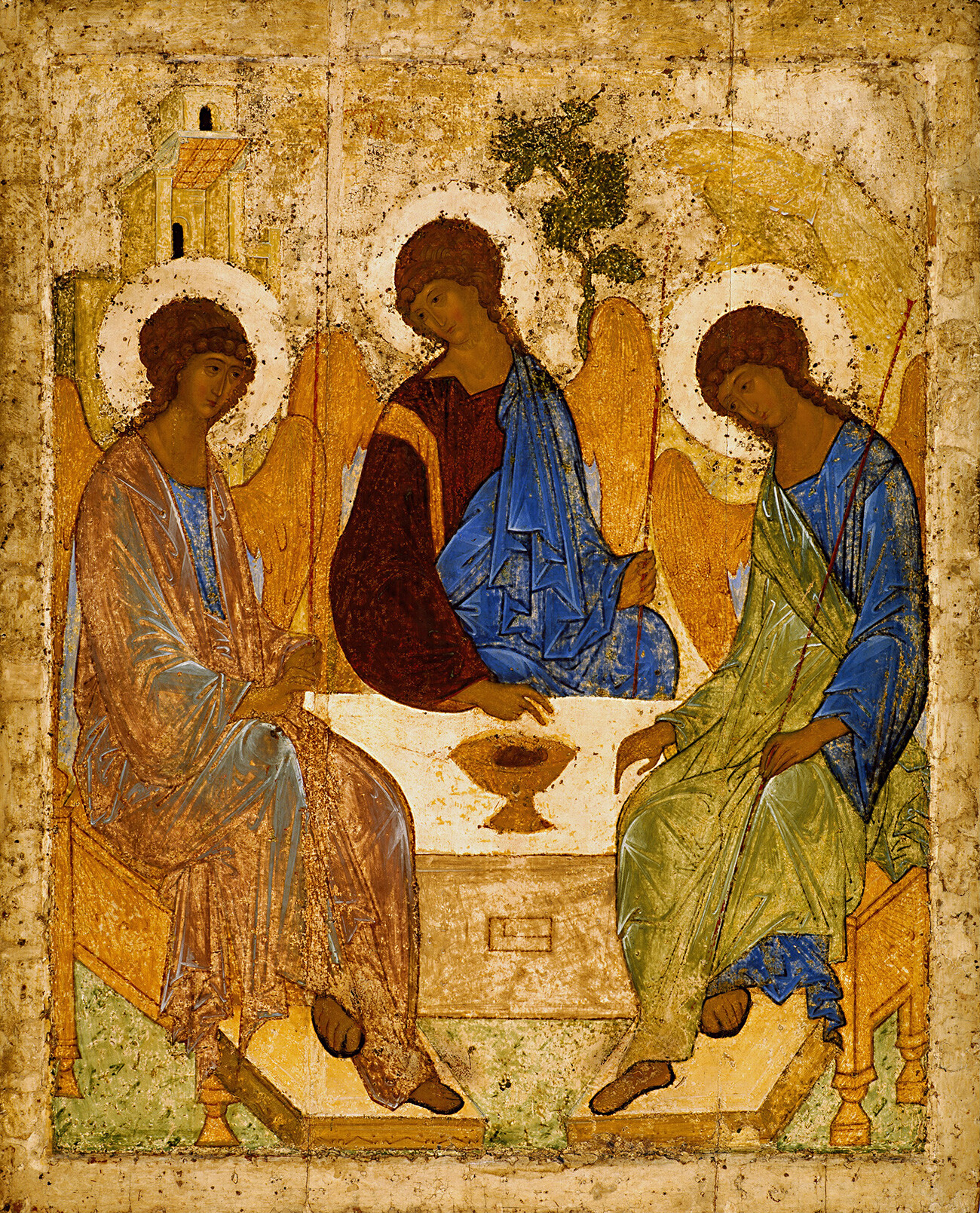
Unfortunately, little is known about the most celebrated icon painter in Russian history. He was born either in the Principality of Moscow or in Veliky Novgorod, sometime between 1340 and 1370, and took vows as a monk at the Andronikov Monastery of the Saviour in Moscow at some time around 1405. Only in 1988, more than six centuries after his birth, was Rublev canonized a saint by the Russian Orthodox Church. During his lifetime, together with Theophanes the Greek and Prokhor of Gorodets, Rublev frescoed the Cathedral of the Annunciation in the Moscow Kremlin. In the Dormition Cathedral in the city of Vladimir, he painted frescoes depicting the Apostles with angels and the Last Judgment. Also here, in the heart of the Principality of Vladimir-Suzdal, Rublev executed one of the earliest copies of the “Vladimir Mother of God” icon. His most celebrated work is “The Trinity,” which he painted for the iconostasis of the Trinity Cathedral at the Trinity Lavra of St. Sergius, (a "lavra" is a monastic settlement with special cells for reclusive living). For a long time “The Trinity” was almost completely encased in a precious oklad (metal icon cover). In 1904, the oklad was removed and the traces of later repairs were cleaned off. At that moment, the art restorers finally saw the shining golden color of the background and the bright clothes of the angels. The medieval work of art was kept at the State Tretyakov Gallery from 1929 until 2023, when it was finally returned to the Russian Orthodox Church.
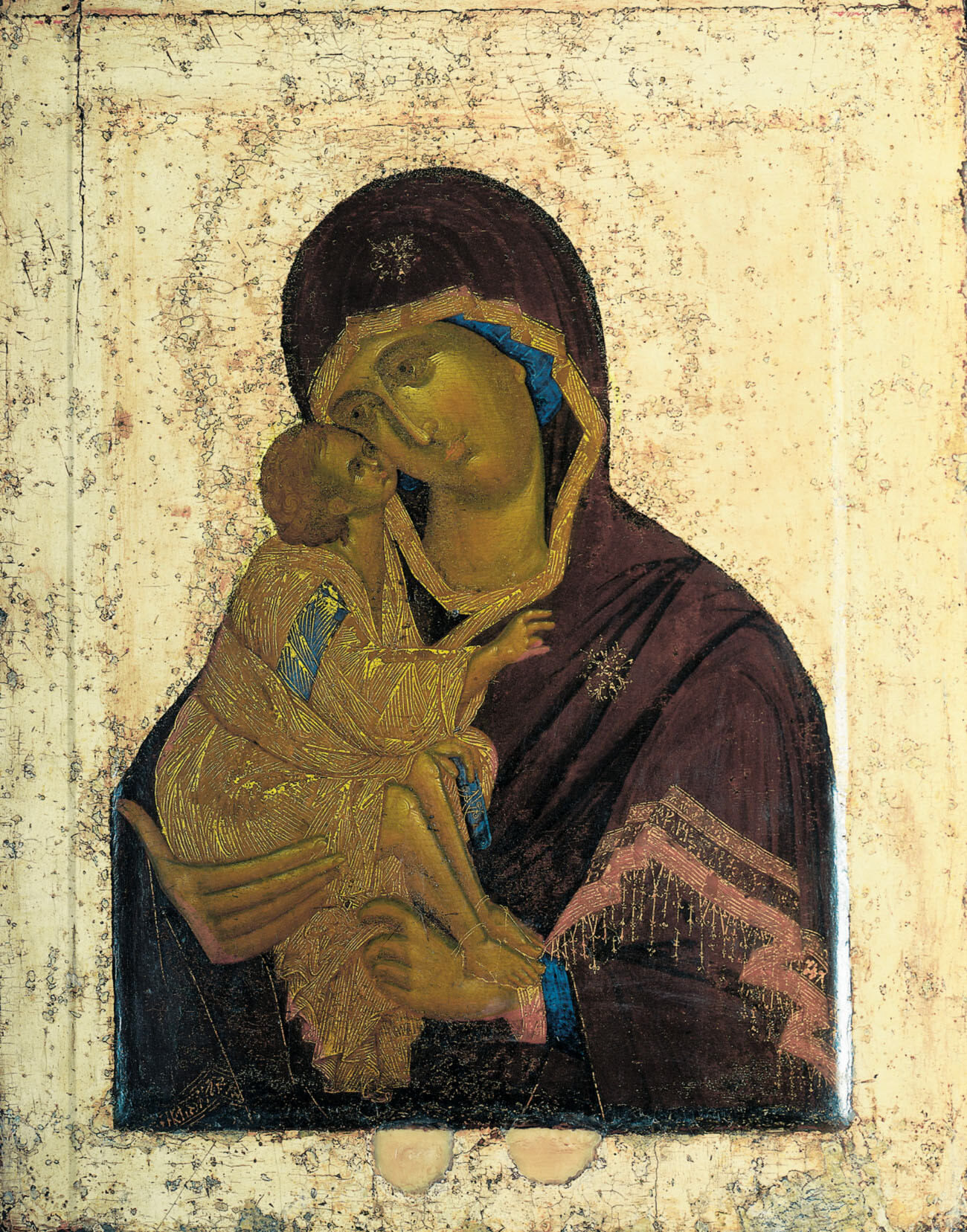
This Greek master traveled from the Byzantine Empire’s capital of Constantinople to Veliky Novgorod in 1370. His work was characterized by a distinctive style - he painted the figures of saints in a markedly broad manner and used accents of light to give them volume. He frescoed the Church of the Transfiguration of the Savior in Veliky Novgorod. One can only imagine how magnificent the wall paintings must have looked originally - only fragments have survived, including the representation of Christ Pantocrator in the dome. Theophanes the Greek also decorated the Cathedral of the Archangel and the Cathedral of the Annunciation in the Moscow Kremlin. It is believed that he painted “The Mother of God of the Don”, which was the icon that the Don Cossacks had presented as a gift to Grand Prince Dmitry Donskoy on the eve of the Battle of Kulikovo.
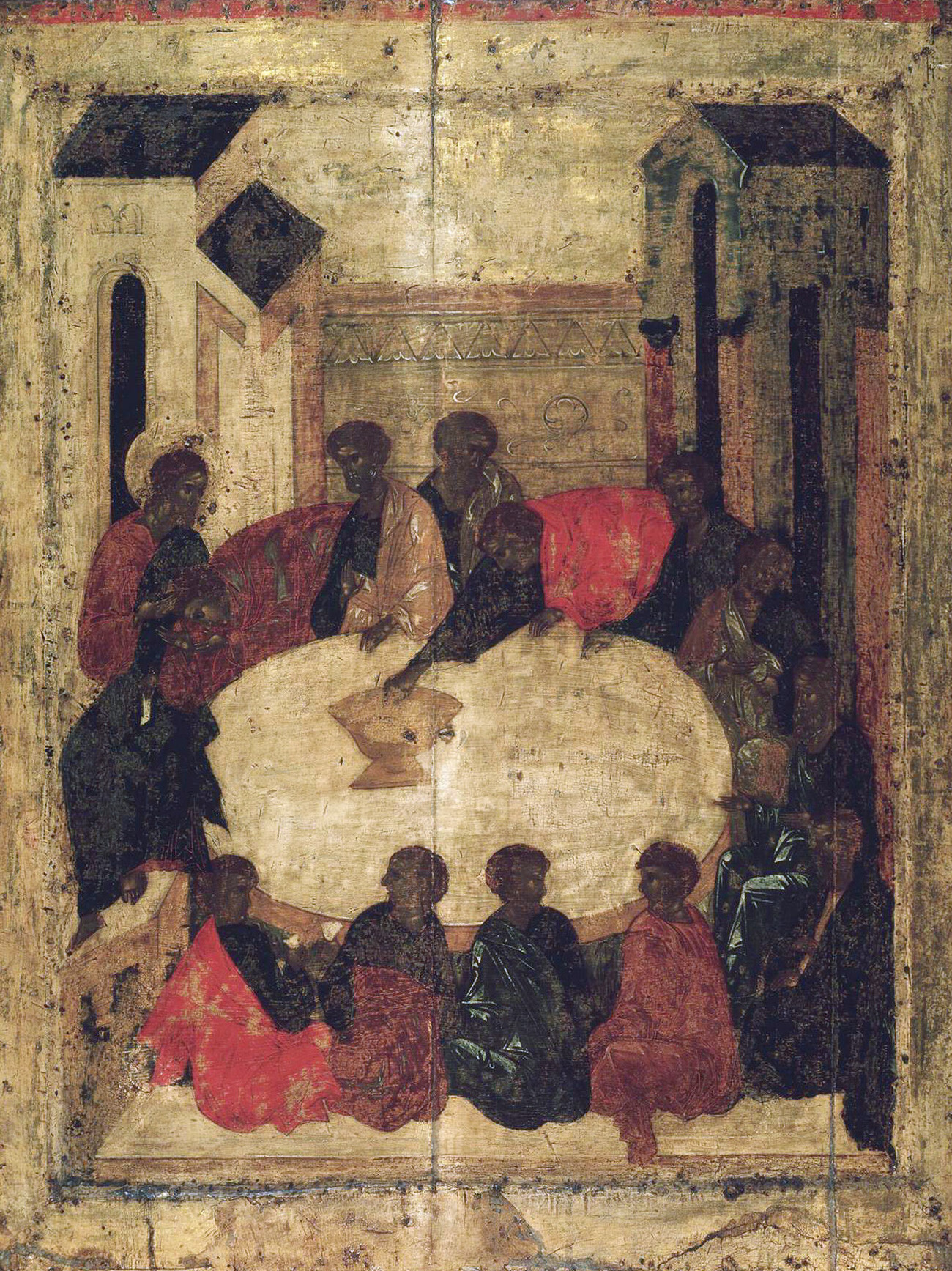
Even less is known about this master painter than about Rublev - only fragmentary records have come down to us. He was probably born in the city of Gorodets, or was a monk at the Gorodets monastery. Prokhor is also considered to be the teacher of Rublev. Together with Rublev and Theophanes the Greek, he painted frescoes in the Cathedral of the Annunciation in the Moscow Kremlin. Images depicting events from the earthly life of Christ and the Mother of God, including “The Last Supper”, are also attributed to him. The latter icon was created several decades earlier than the famous fresco by Leonardo da Vinci.
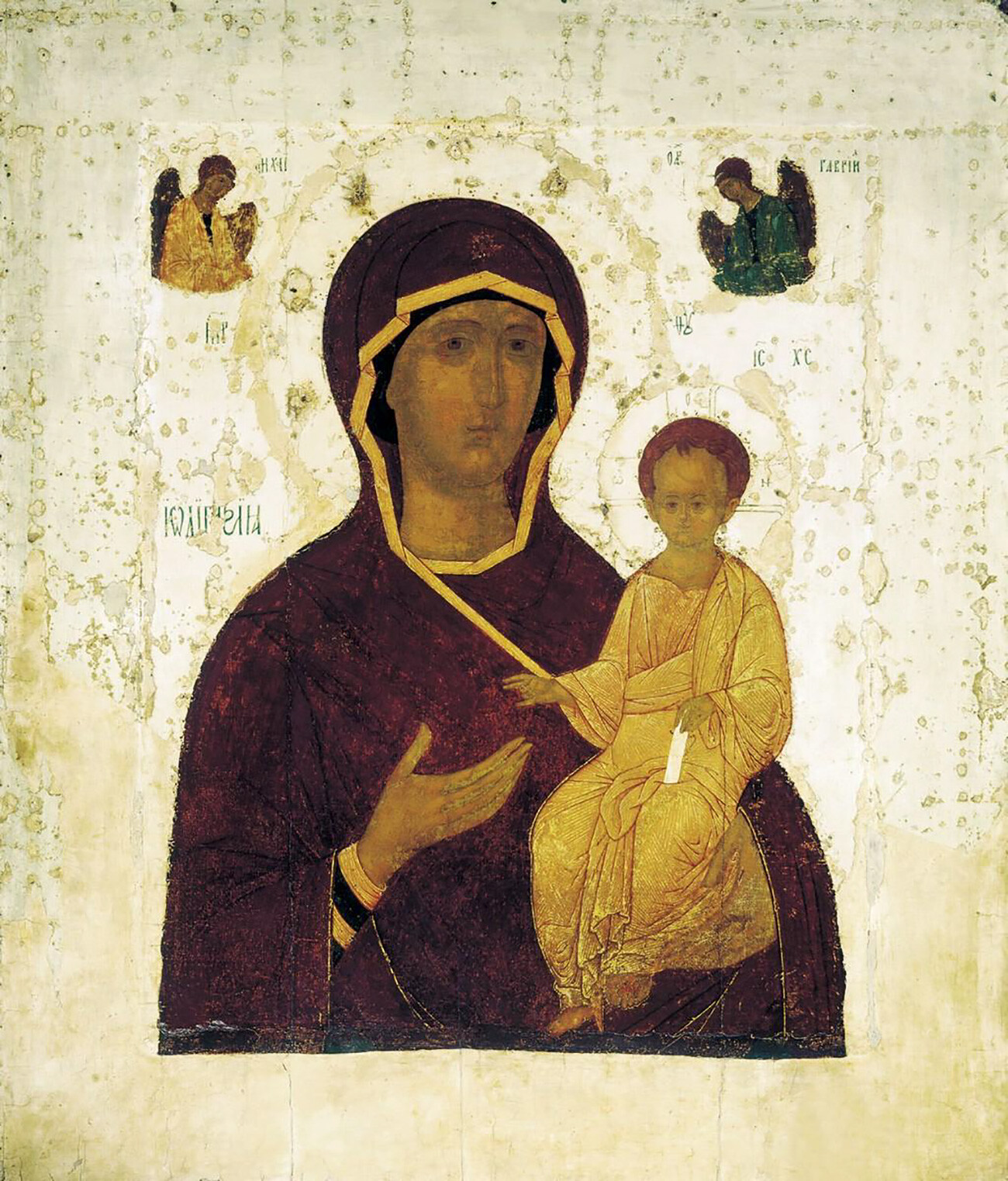
Unlike Theophanes the Greek and Rublev, Dionisius was not a monk. He was the first layperson icon painter and came from the Chirikov family, descendants of Peter Ordynsky, leader of the Golden Horde. Dionisius placed great value on his own work: For an icon screen in the Cathedral of the Dormition he received 100 rubles, which at that time was an astronomical sum. Unfortunately, the work has not survived. On the other hand, you can view his stunning icons and frescoes at the Ferapontov Monastery of the Nativity of the Virgin (Vologodsky Region); as well as the extraordinary “Virgin Hodegetria” painted on the board of a Greek icon that had been severely damaged by a fire that ravaged Moscow's Ascension Convent.
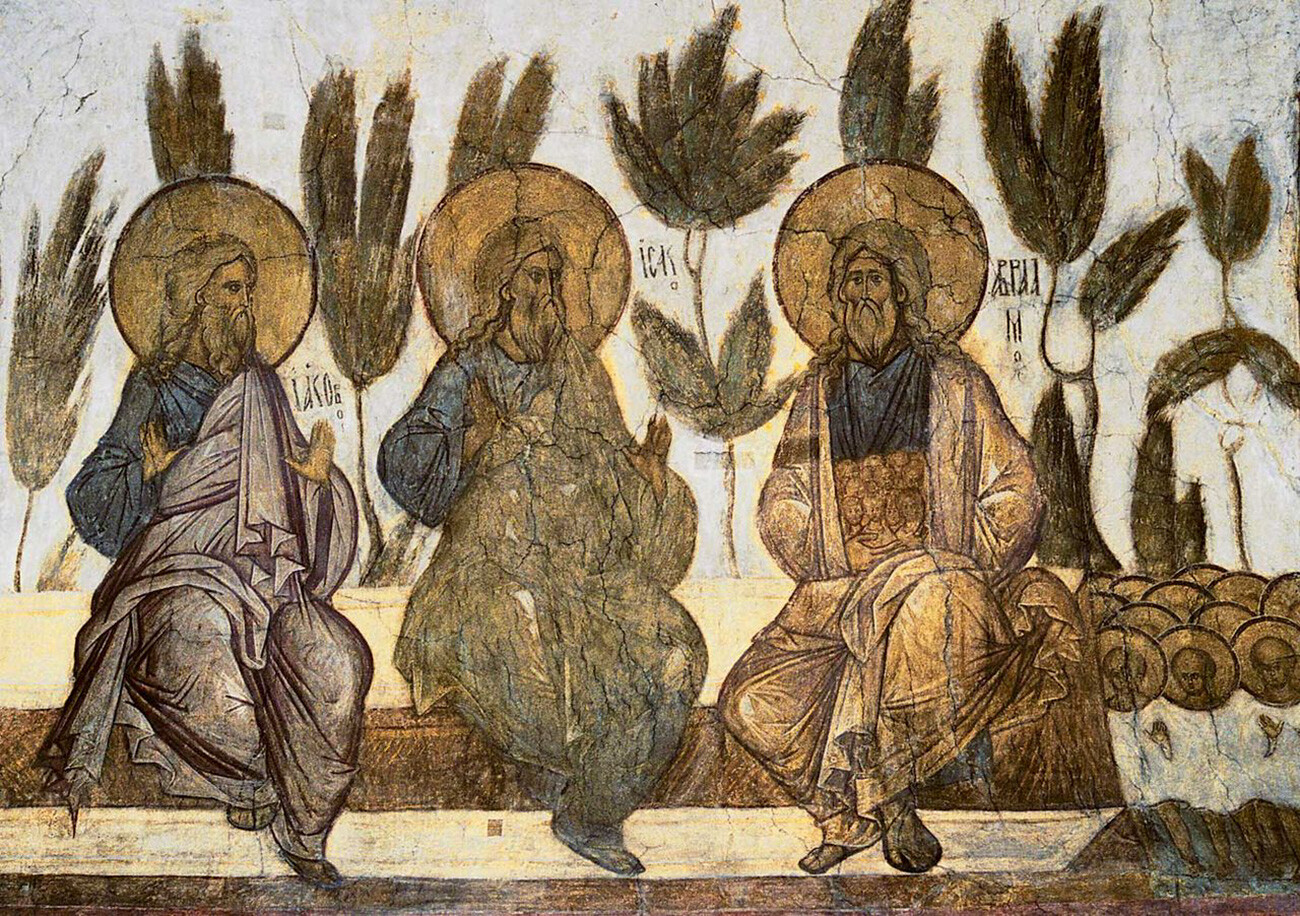
Nothing is known about Daniil Chyorny's origins, or when he first met Andrei Rublev, but the two icon painters worked together creating frescoes that were highly esteemed for their exceptional beauty. Among the great works created by Chyorny's brush are the fresco “Abraham's Bosom” in the Cathedral of the Dormition in the city of Vladimir. Like his colleague Rublev, Chyorny chose a monastic life at the Andronikov Monastery of the Savior in Moscow. In 1430, the plague swept Moscow, first taking the life of Rublev and then Chyorny.
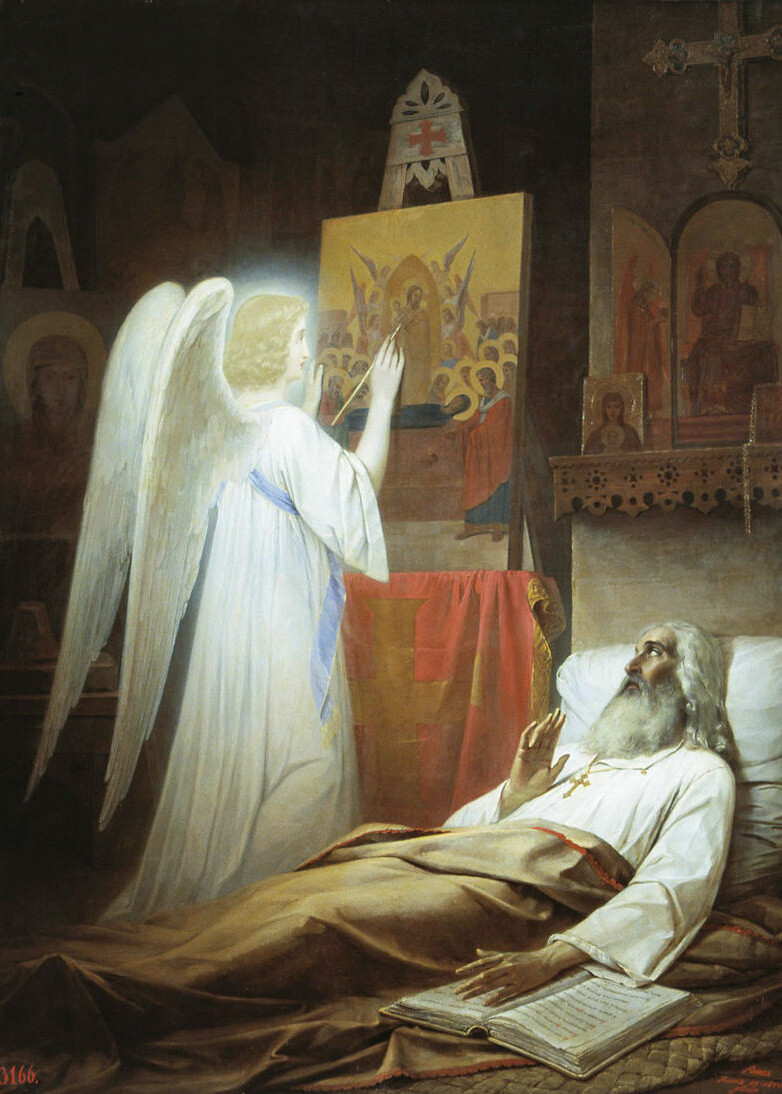
An account of the life of the first Russian icon painter is found in the Patericon of the Kiev-Pechersk Lavra (Kiev Monastery of the Caves), which is a collection of tales about the founding of the legendary monastery. He studied icon painting starting in childhood and participated in the creation of the mosaics in the Cathedral of the Dormition of the Kiev-Pechersk Lavra. It was said that all his works possessed miracle-working attributes. There is a legend that at the end of his life, when Alypius himself could no longer hold a brush in his hands, an angel appeared to him and painted an icon on his behalf.
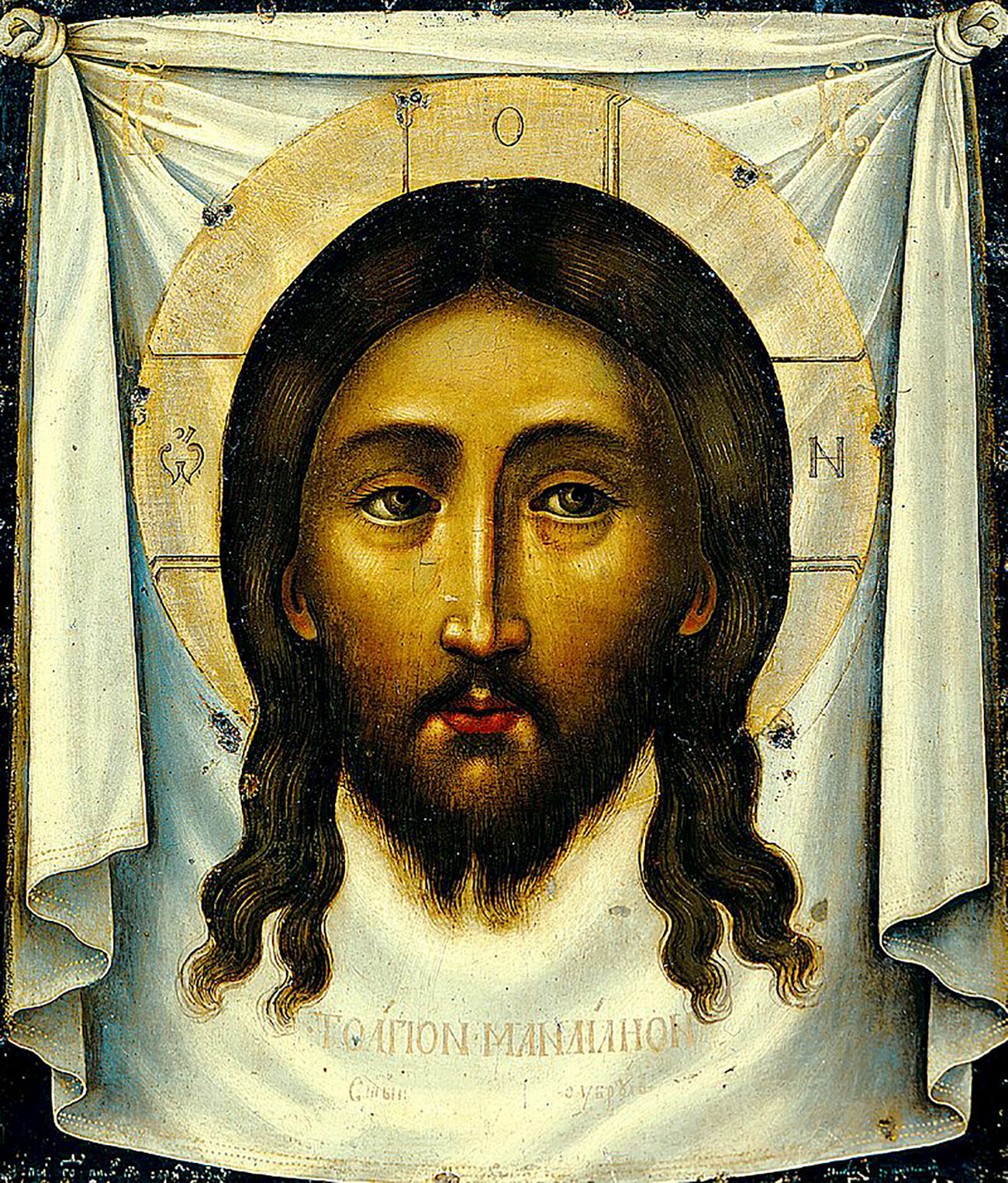
Ushakov began working in the Kremlin's Silver Chamber where ritual plates, everyday items and ornaments were produced. There, he painted decorations and icons. Subsequently, he took charge of the craftsmen of the Kremlin Armory. Ushakov launched the concept of the artel, which was a guild, or type of cooperative of artists and craftsmen. In the artel, each icon painter had their particular area of responsibility - some painted drapery and backgrounds; others painted the faces; while others devised the composition of icons. Ushakov not only managed to preserve the traditions of the local school, but also absorbed the Western manner of painting. This may explain why his icons are highly realistic; for example, such a style is evident in his “Savior Not Made by Hands” that was painted for the Church of the Trinity in Nikitniki. He also painted his own version of the “Vladimir Mother of God”' and which is today known as “The Planting of the Tree of the Russian State”. In this image, a tree is depicted growing out of the Moscow Kremlin's Cathedral of the Dormition, and on whose branches the Moscow saints are portrayed inside roundels. Below, inside the Kremlin walls, stands Tsar Alexei Mikhailovich with his family.
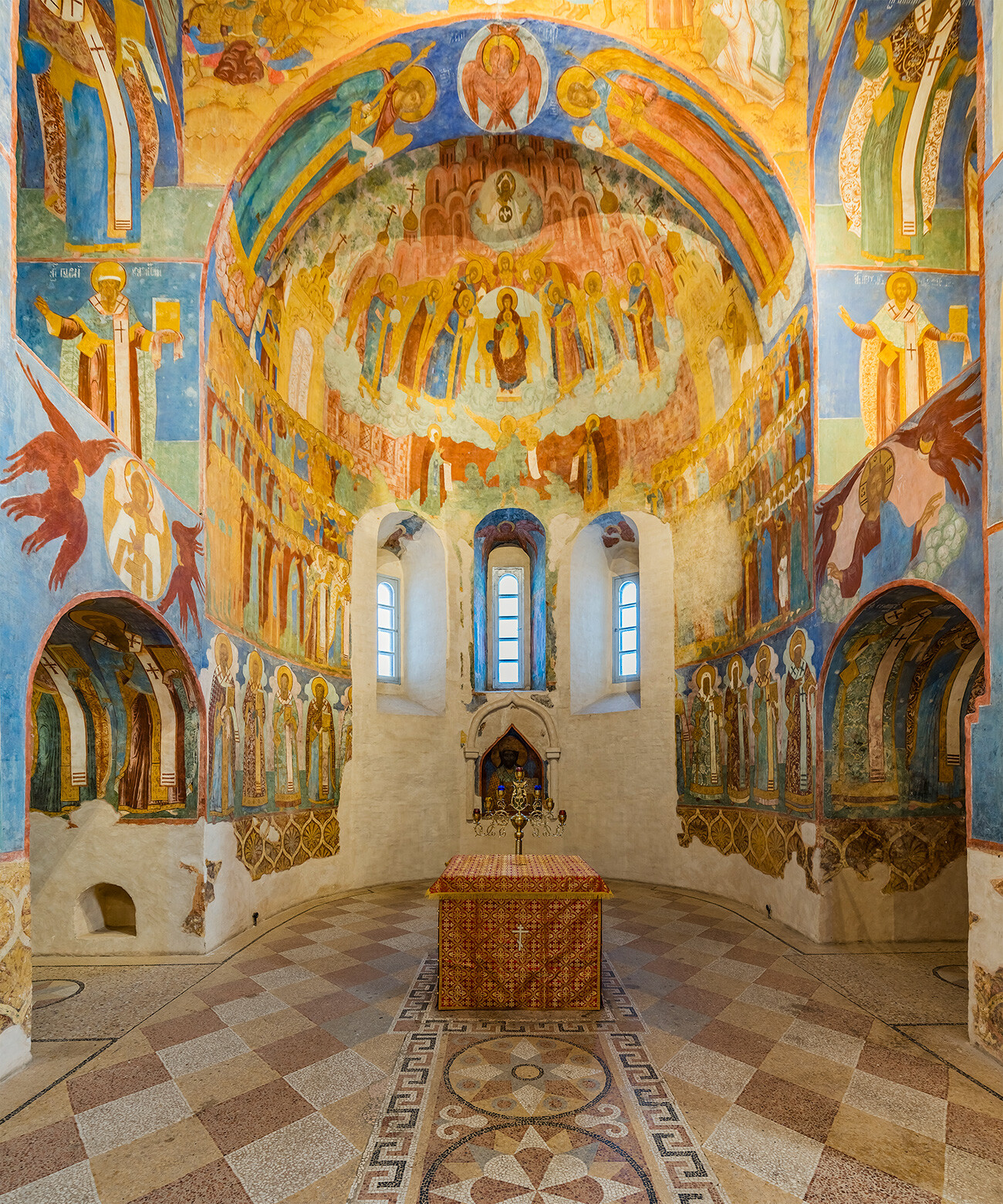
Upon entering the Cathedral of the Transfiguration at the Saviour Monastery of St. Euthymius in Suzdal for the first time, the visitor will be struck by how the frescoes remain untouched by the passage of time, and still appear astonishingly vivid. That is the effect produced by the work of master painter Gury Nikitin. He refined his craft working in the Kostroma artel, which was often invited to work in Moscow. These projects included frescoes for the Cathedral of the Archangel in the Moscow Kremlin, where the project was directed and supervised by Simon Ushakov. An unrivaled master with color, Nikitin painted remarkably vivid and vibrant frescoes in the Church of Elijah the Prophet in Yaroslavl, in the Trinity Cathedral of the Danilov Monastery in Pereslavl-Zalessky and in the Cathedral of the Dormition in Rostov Veliky.
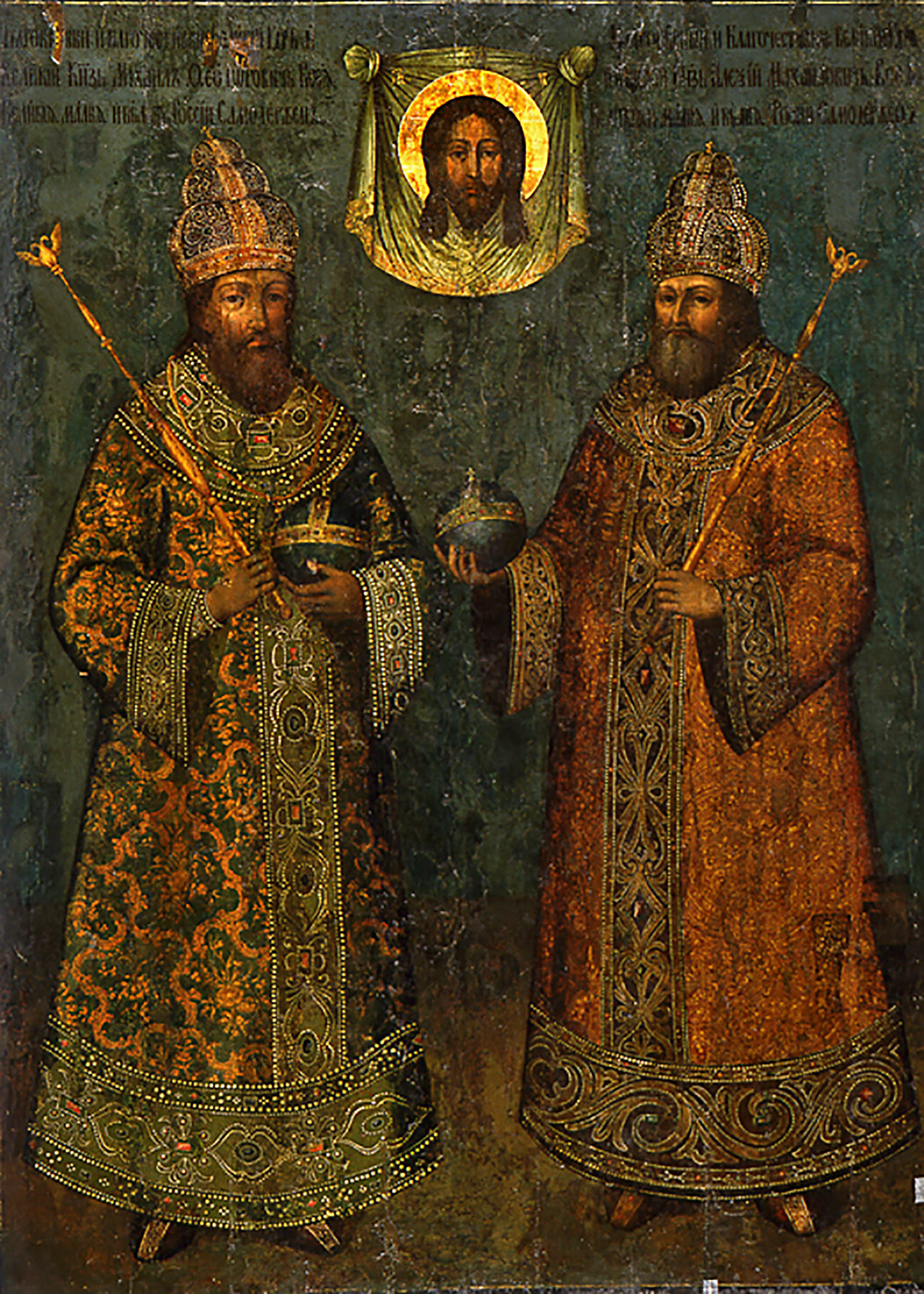
As the Kremlin Armory’s master icon painter and Ushakov's successor, Zubov served under tsars Mikhail, Alexei and Peter the Great with his brother Ivan. Zubov completed some of the most significant church commissions of the era: He painted icons for the Cathedral of the Dormition in the Moscow Kremlin, as well as icons and frescoes at the Novodevichy and Donskoy monasteries. Zubov was the creator of the first ever portrait made in Russia, which depicted the tsars Mikhail and Alexei before the holy image of the “Savior Not Made by Hands”.
Dear readers,
Our website and social media accounts are under threat of being restricted or banned, due to the current circumstances. So, to keep up with our latest content, simply do the following:
If using any of Russia Beyond's content, partly or in full, always provide an active hyperlink to the original material.
Subscribe
to our newsletter!
Get the week's best stories straight to your inbox